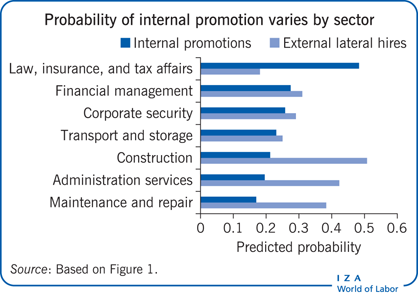Elevator pitch
Hiring is one of a firm’s most important decisions. When an employer fills a vacancy with one of its own workers (through promotion or lateral transfer), it forgoes the opportunity to fill the position with a new hire from outside the firm. Although both internal and external hiring methods are used, firms frequently have a bias favoring insiders. Internal and external hires differ in observable characteristics (such as skill levels), as do the employers making each type of hiring decision. Understanding those differences helps employers design and manage hiring policies that are appropriate for their organizations.

Key findings
Pros
Internal hiring has low downside risk because there is little uncertainty about productivity.
As a smaller pool of competitors means that effort is more likely to be rewarded with promotions, internal hiring creates strong incentives for workers.
Internal hiring encourages the development of specialized knowledge and skills because workers anticipate long careers with the firm.
A firm can productively reallocate its workforce across job levels through internal hiring.
Internal hiring at one job level creates new vacancies, strengthening incentives at lower levels.
Cons
Internal hiring has less upside potential than external hiring because there is little uncertainty about productivity.
A firm’s workers might grow complacent and lazy without the prospect of external hiring.
Internal hiring limits the infusion of new knowledge and ideas into the firm.
Internal hiring restricts the size of the applicant pool.
The new vacancies created in a firm by internal hiring are associated with additional recruitment, screening, orientation, and training costs.